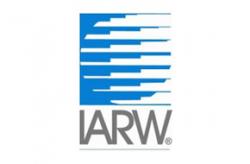When to Automate
Automating a system or process is a big decision – here are some factors to consider.
The business case for optimizing efficiencies by automating temperature-controlled warehouses is stronger than ever.
If the right fit, automation such as palletizers, automated storage and retrieval systems (ASRS), conveyors, automated picking solutions, automated guided vehicles (AGVs), autonomous mobile robots (AMRs) and automated truck loading/ unloading systems can be highly beneficial from the standpoint of labor, safety, food quality, throughput and traceability. However, as many 3PL providers operate on one- to three-year contracts with customers, making automation decisions can be difficult. Automation investments made for one customer may not work for another customer. This could lead to costly and unjustifiable retrofitting or other workarounds.
“Automation is not a one-size-fits-all solution,” emphasizes Don Schoenl, President and CEO of Agile Cold Storage. “There are applications where we need 120-foot-high fully automated, no lights/low oxygen facilities, and in another circumstances, a semiautomated building or a conventional cold storage warehouses works.” Considerations Schoenl believes there are two primary criteria to consider when deciding whether to add automation or robotics to a particular operation. “First, how will it help meet your customers’ requirements? Second, what is the availability of qualified labor in your market?”
Another consideration is the volume of activity the operation requires, says Schoenl. “If it happens one month or a year verses 10 times a day, you might think differently about automating that operation. However, that should not stop you from investigating where automation could be beneficial – do not wait to do all or nothing.” Bruno Vargas, Operational Manager at Iceport, a portside temperature-controlled warehouse in Brazil with automated stacker cranes and conveyor tables, says, “The decision to automate our facility was because we want to attract loads with high turnover and we have to have handling capabilities beyond our competition, but with less allocated labor.”
Commenting on the construction of a 92,000-pallet-position, fully automated expansion to an existing Lineage Logistics facility in Peterborough, United Kingdom, Daniël Walet, Operations Research Scientist at Lineage, says the reason for choosing to automate in the expansion is twofold. “By using automation, we achieve the storage density, and therefore the corresponding energy efficiency, that we are otherwise unable to achieve in a conventional warehouse,” Walet says. “Given that the warehouse is so cold, finding people that want to work in these environments is difficult. However, our operations in the cold chain are necessary to make sure that people are able to buy groceries.”
A Bridge
Walet explains the automated part of the Peterborough facility is the storage and retrieval function. “Any case picking activities will be completely manual as well as the loading part. For unloading, this facility will be equipped with an automatic truck unloading system, allowing the truck to be automatically unloaded within a few minutes.” He adds, however, that function requires special trucks, so the use of this technology is limited and all other unloading is still done manually. “An early automation to consider would be conveyors, providing they are a cost advantage and can go from point A to point B and back again,” says Schoenl. “After that, technologies to look at are AGV forklifts that can move from point A to B to C to D in place of a forklift or pallet jack operator – that can really be a bridge to automation.” Schoenl says the next step up is a big jump – pallet hoteling or storage systems that mimic the deep-lane bays of fully automated warehouses.
Underserved
Case picking in cold storage warehouses is underserved by automation in both the United Kingdom and the United States, notes Walet. “The challenge of automating case picking, and automation in general, is to build a solution that is robust enough to handle drastic order demand changes, like those associated with the pandemic, in addition to the traditional volume peaks, such as during winter holidays,” Walet says. “Today, automation/ robotics is not flexible enough to scale up as easily as with seasonal labor – and these types of warehouse scenarios would benefit from more advanced automation.” Vargas believes the docking process for vehicles would be more efficient with automation. “Our idea is that in the not-toodistant future, we can use platforms for the containers in the dock instead of vehicles, which would bring savings and safety to the operation.”
The Promise
What is the most exciting thing today about automation? “We crossed that threshold of reliability and redundancy and automation is a proven commodity – we are not dealing with start-ups,” says Schoenl. “Traceability is total – 100%. There are no allocation errors, everything is indicated in the system, and the pallets are automatically directed,” Vargas says. “And speed – we can lower a full load for shipping at the dock in 8 to 10 minutes.” Walet says the most exciting part about their work with robotics is ensuring that manual labor and robotics work in harmony with one another as more automation is introduced to their facilities. “Robotics will not fully replace manual labor in the cold chain as humans are still more efficient at certain tasks in the warehouse,” Walet notes. “They can complement each other, but only when both are managed in the correct way, through the right software (WMS/WCS) and the corresponding algorithms. Building the software stack to manage that relationship is what excites me the most about automation.”
Tomorrow
For 3PLs that have yet to automate, Schoenl says they should be investigating automation options now and determining when that threshold of cost and reliability is there. “Automation needs to happen, but there can be degrees of automation – it is scalable. Just because you can’t be fully automated does not mean you should do nothing at all. If you take that route, you won’t be in business in the future.” In 15 years, retrofitting existing conventional buildings will be impacting the cold chain the most, according to Walet. “The global cold chain is a growing market, but only a small percentage of this market is automated, which means the biggest part still consists of conventional warehouses,” Walet says. “As AGV technology gets more mature, and more robust in its ability to work in a cooler/frozen environment, it will have the biggest impact on the cold chain. It’s using existing real estate, but applying new technology to increase cold chain efficiencies.”
ALEXANDRA WALSH is a Senior Publishing Consultant with Association Vision and Editor-In-Chief of COLD FACTS.
EMAIL: awalsh@associationvision.com
Source: Cold Facts May/June 2021 issue



